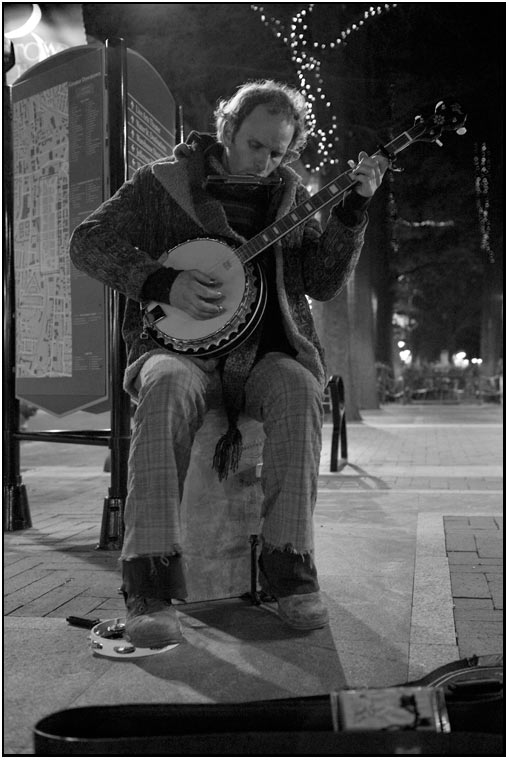
There is no land in Charlottesville “zoned” for mobile homes. Too bad, they have positive aspects.
Category: Charlottesville
downtown
We were for it before we were against it
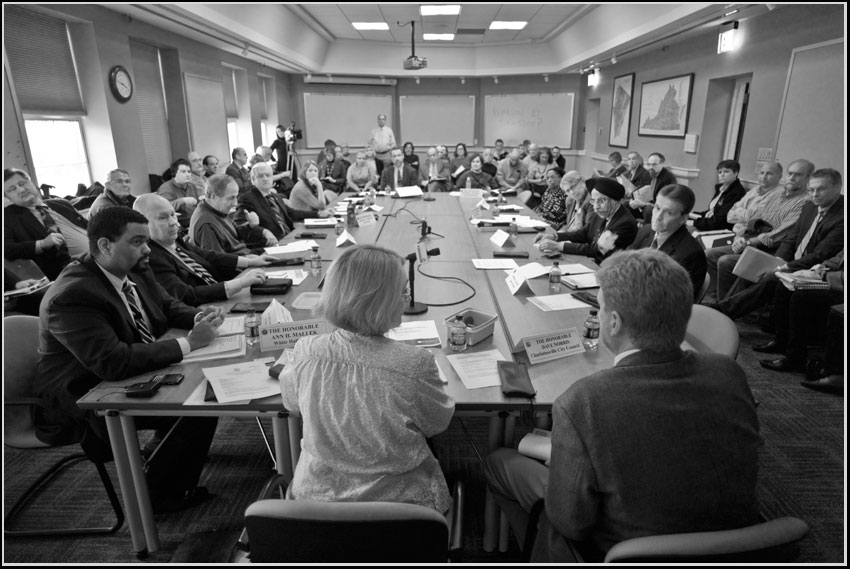
City of Charlottesville and County of Albermarle officials met January 18, 2011, to share water supply ideas. It was SRO.

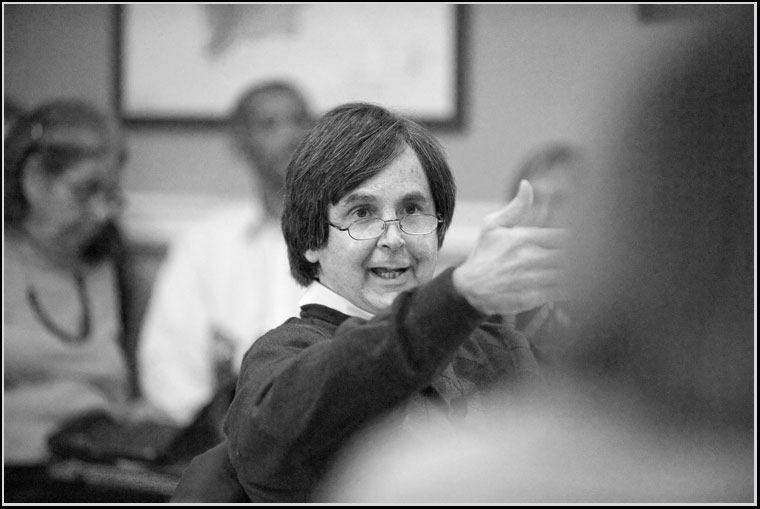
County Supervisor Dennis Rooker was very persuasive.

Many City residents have contacted the elected representatives, arguing for a phased approach to water supply improvement.
I wrote the Council this past weekend.

Later in the day, January 18, City Council met and discussed the water supply.
Mayor Dave Norris and Vice Mayor Holly Edwards wished to preserve the City’s water system assets. Councilors Huja, Szakos and Brown voted to amend Council’s September 20 resolution and build a thirty foot dam.
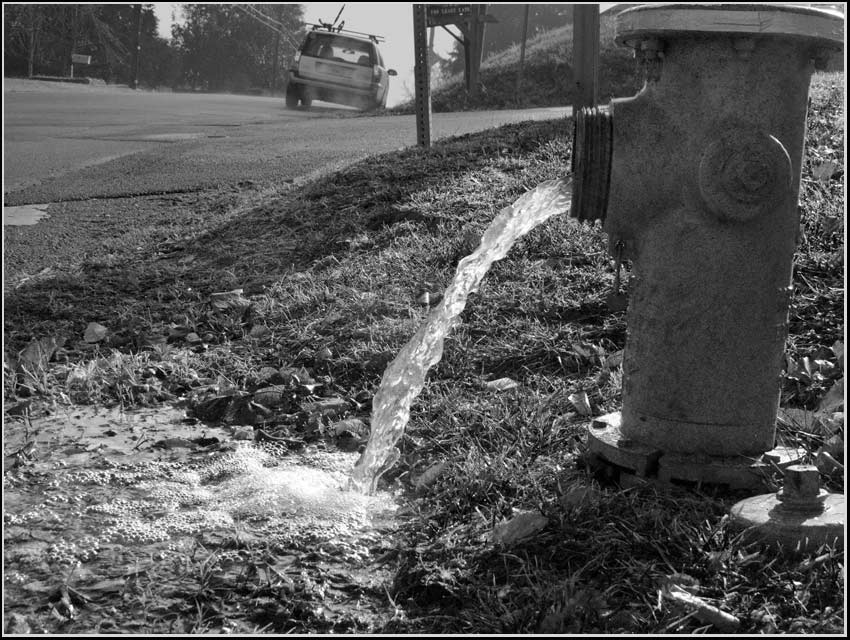
Read more:
The Hook
Hawes Spencer and David Norris join Coy Barefoot to discuss.
Kevin Lynch and Dede Smith join Coy Barefoot.
January 21, 2011, Mr. Huja joins Coy Barefoot
January 25, 2011, Ms. Szakos joins Coy Barefoot
January 25, 2011, Mayor Dave Norris joins Coy Barefoot
true grit
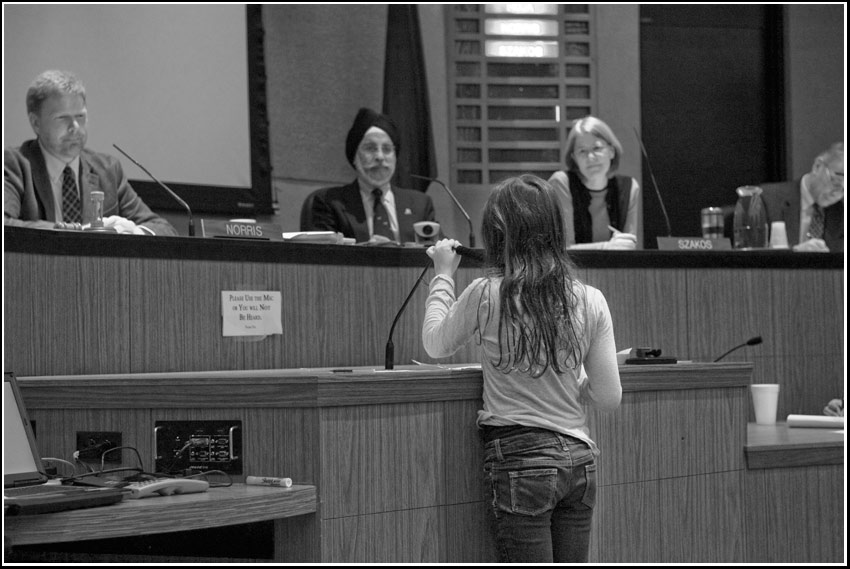
True Grit
Hi, my name is Serena and I am here on behalf of dredging
because even a fourth grader can handle this stuff.
I think dredging is a good idea because:
1- It can hold more storage
2- dams can block river life
3- We can reuse the soil that the machine sucks up for our plants
4- It is an easier and quicker way to get water.
Thankyou, I hope my research has helped.--SC
community
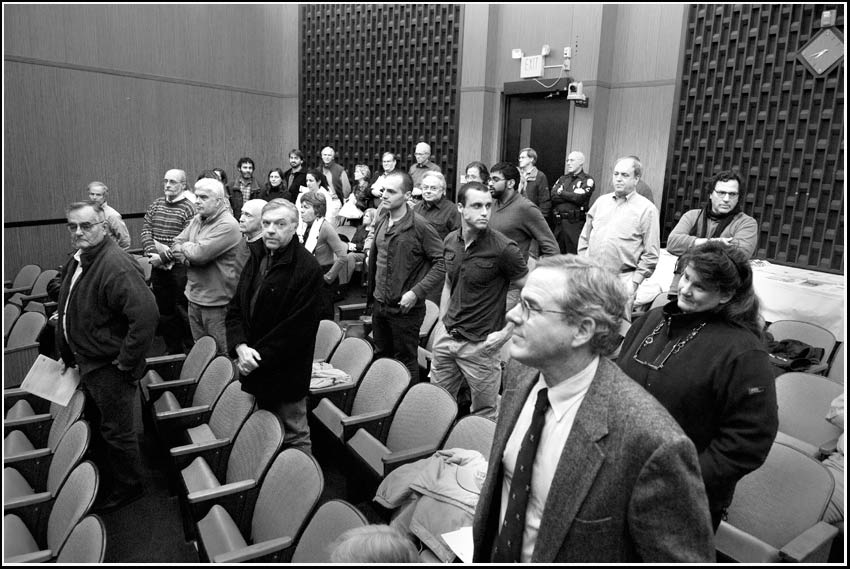
Early December, there was mention at a press conference about a “vocal minority”.
Everyone at this table is well aware that there has been, what I would characterize, as a vocal minority in the community pushing against what is the community’s approved water supply plan.–JW
We don’t profess that there is unanimity in the community, but there is consensus. There seems to be a pretty active effort that I say borders on disinformation, to distract people from this great opportunity that we have.–TH
Last night, local water lady Betty Mooney asked members of that “minority” to stand up during a Council meeting.
downtown
downtown
influent

Tom Frederick of the RWSA and Janice Carroll of Hazen Sawyer confer during slide presentation regarding RWSA’s Rivanna Interceptor Sanitary Sewer Pumping Capacity Improvements.
The Rivanna Pump Station is currently located adjacent to Riverview Park, at the end of Chesapeake Street in the Woolen Mills neighborhood.
Woolen Mills Neighborhood Association president Victoria Dunham summarizes the four pumping station options presented by the RWSA below…
The RWSA has presented four potential options. The new station will have a bigger footprint, but will also need to be taller because the electrical equipment has to be above the 100-year flood level.
Option A leaves the pumping station in roughly the same vicinity, but enlarges it and moves it closer to Bev and Dimi’s house. For the many folks in the neighborhood who have fought the good fight for so many years re odor and eyesore, this is a discouraging option. They say it probably won’t smell this time. but that’s one heck of a gamble for us to take as a neighborhood. Needless to say, this is the cheapest option.
Option B moves the pumping station down into the park. That will necessitate a lot of clearing and a road system into the park to service the station. As the park was always intended to remain as untouched as possible, and this solution would shrink the acreage a bit, this is alarming.
Option C moves the pumping station onto their own property (the main plant), which make a lot of sense. There’s a significant problem with this however, because the RWSA would have to acquire an easement across four properties along E Market St. As a neighborhood, we would need to be absolutely certain that those four neighbors were completely fine with that. (I’m not 100% sure exactly which of the properties would be impacted, but guess it would be from Jon Fink and Roger Voisinet, on down the north side of the street to the old mill property. The pipe would be placed 30ft deep, which is one heck of a trench to be dug in one’s back yard.
Option D moves the pumping station across the river on the opposite bank, which is owned by State Farm. From an environmental justice perspective, this is a sound solution. When one considers the negative quality of life suffered by our neighborhood at the hands of the RWSA over the last 30+ years, this is a mighty tempting option. Needless to say, it’s also the most expensive.
To see RWSA’s powerpoint and learn more visit…
http://www.rivanna.org/pumpstation/index.htm
Past contretemps with byproducts from the RWSA’s service region:
compost
wastewater
biosolids
mother of all outhouses
Bluestone
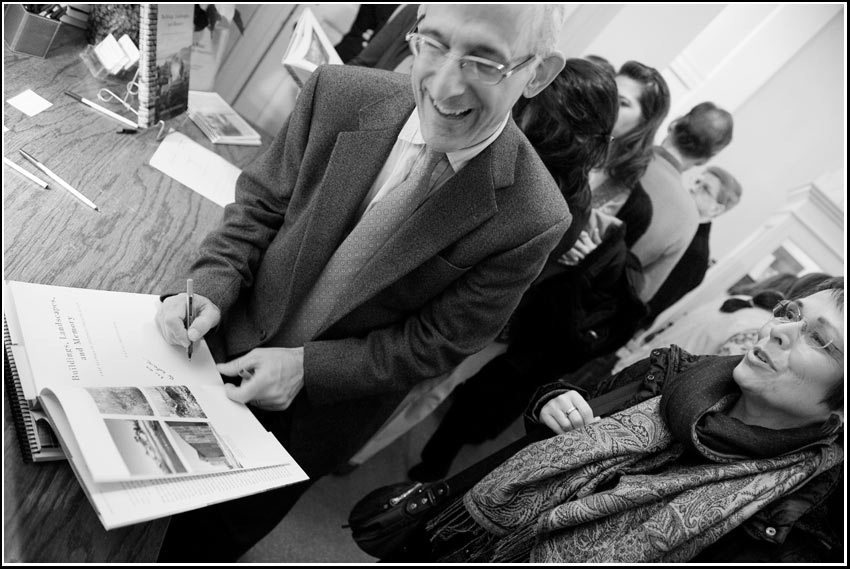
Dan Bluestone’s new book “Buildings, Landscapes, and Memory: Case Studies in Historic Preservation” is available. The author is pictured above at a book release gathering at Albemarle Charlottesville Historical Society, 12/3/10.
Meanwhile, the urban renewal era highway through Charlottesville’s central park presses ahead by a 3-2 margin and buildings fall.
Maybe our leaders can do some reading and think again.
“The process whereby individuals, institutions and communities choose to wield both private and public power to highlight certain histories, and to ignore or render invisible others, is a critical dimension of historic preservation and public history.”–Bluestone
The religion of progress has a central role in driving the predicament of industrial civilization because the dead end of dependence on rapidly depleting fossil fuels can’t be escaped by continuing on the path we’ve been following for the last three centuries or so.–John Michael Greer, The Long Descent, pg 69
green city philippic
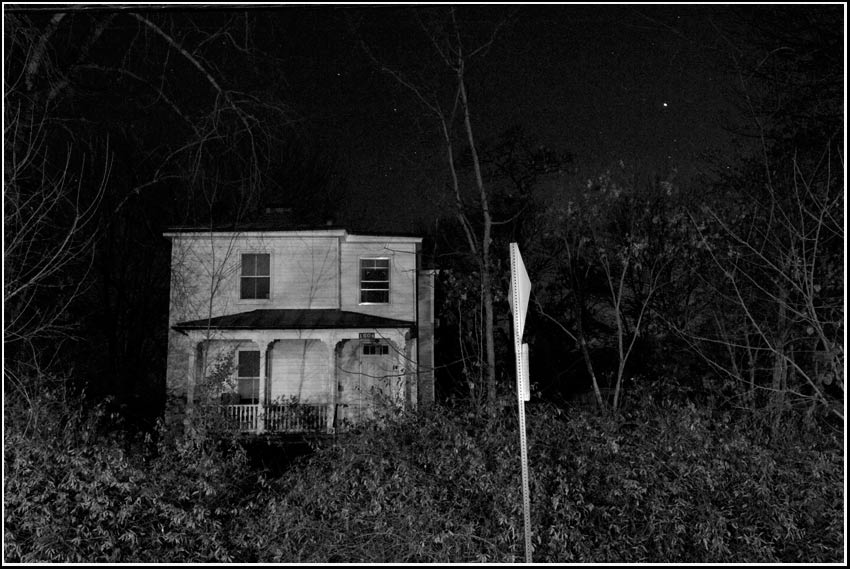
My new neighbors across the street leave their lights on at night, illuminating my house and sleeping quarters. Will talk to them.

This morning, the glow coming through the window woke me at 0500hrs.
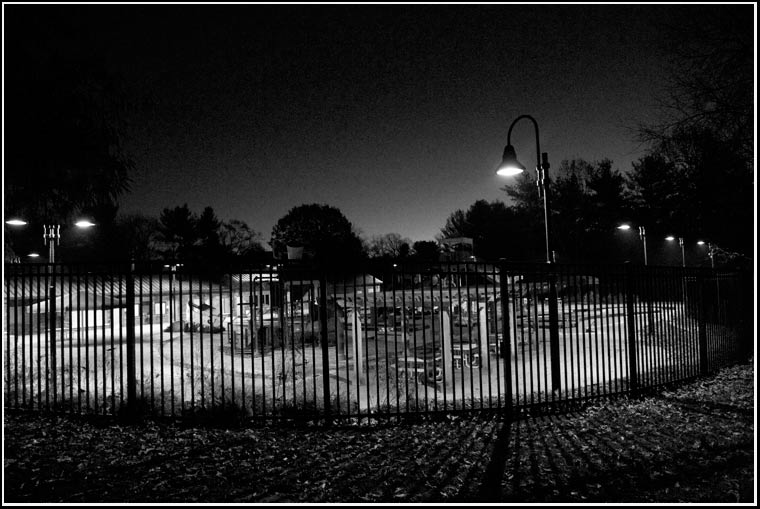
Since 1999 I’ve talked with the City about “light trespass”, light pollution and about funds spent to undo the night.
We are in tough fiscal times. The City Council has a budget workshop next Thursday. How is this for an idea? Turn off some of the lights!
Today, at 0545hrs there were seventeen lights illuminating the empty pools at the “Onesty Family Aquatic Facility”.
Who pays that electric bill?

How much does Charlottesville City spend on lights?
Here are the updated numbers and costs that you requested relating to street lighting in the City. Dominion Power has about 3800 street lights installed and operating in the City. This figure is approximate as we have work orders in at most times to add or take down a few. The monthly cost is $11. Replacement costs are $18/lamp, $180/globe, $37/ballast and $975 per pole. City Owned ornamental street lights have increased to 435 and are separately metered. We now have a new “dark sky” compliant standard for all new street lights installed in the City. The cost to changed an old fixture to the new “dark sky” compliant is $800. The City does not have a separate contract with Dominion for street lights. We joined with other municipalities in the Commonwealth and negotiated a common contract.–6/24/09 Public Works
In December of 2000, citizens submitted a petition:
A Petition to the Planning Commission and City Council of the City of Charlottesville
We, the undersigned residents of the City of Charlottesville, request that the Commission and Council begin a plan now for improving the future of nighttime outdoor lighting in our community.
1. The increasing opaque glow in our night sky is evidence of wasted energy.
2. Lighting that produces glare in our line-of-sight is blinding and a safety hazard.
3. Unshielded, or excessive lighting intrudes into nearby homes, yards and natural areas.
Please design a plan to discourage outdoor lighting that:
1. Shines light upward into the sky, where it serves no purpose.
2. Creates glare in our line-of-sight, or intrudes into private properties/natural areas.
3. Is excessively bright, exceeding recognized industry recommendations.
“Full cut-off” shielded lighting fixtures are now offered by all major lighting manufacturers. These fixtures efficiently distribute light downward, without glare and control the spill of light into the neighboring properties and the night sky.
Through these improvements we can improve nighttime visibility & public safety, conserve energy, be good neighbors and regain our disappearing view of the night sky.
There have de jure advances in the past ten years (a lighting ordinance was passed) but little de facto change. Why are the Park Street and Locust Avenue bridges over Route 250 illuminated sufficiently to read the Hook at night?
When will our City learn how to operate a light switch?

History Of Streetlighting in the US–Wikipedia
Organization involved with saving night International Dark-Sky Association

